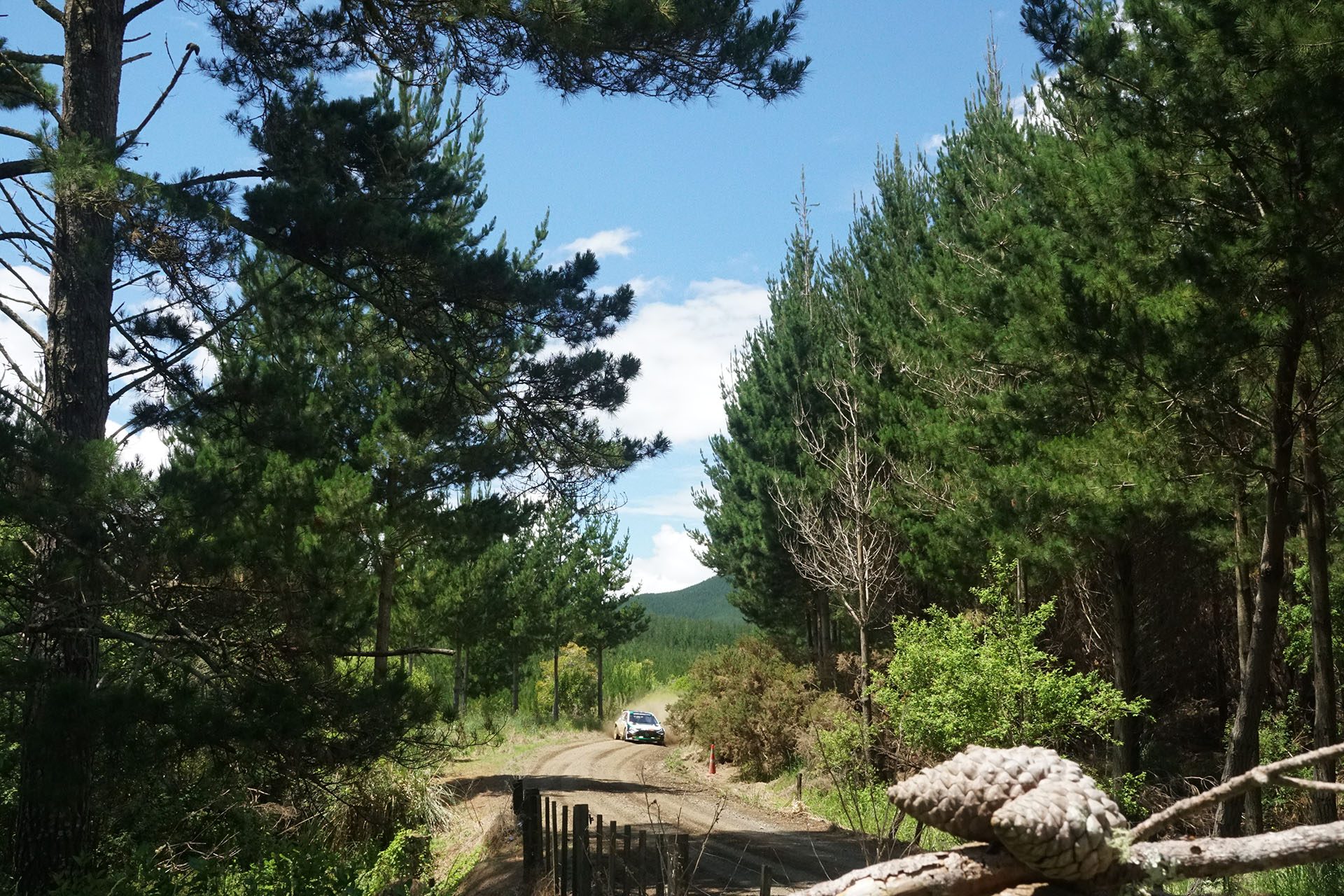The second-generation Kona, known also as SX2, has arrived, bigger, better equipped and more EV-looking than before, with added model choice. We drove the petrol range around the Coromandel loop, starting out at the Waihi end, with a quick intermission in the Maramarua forest.
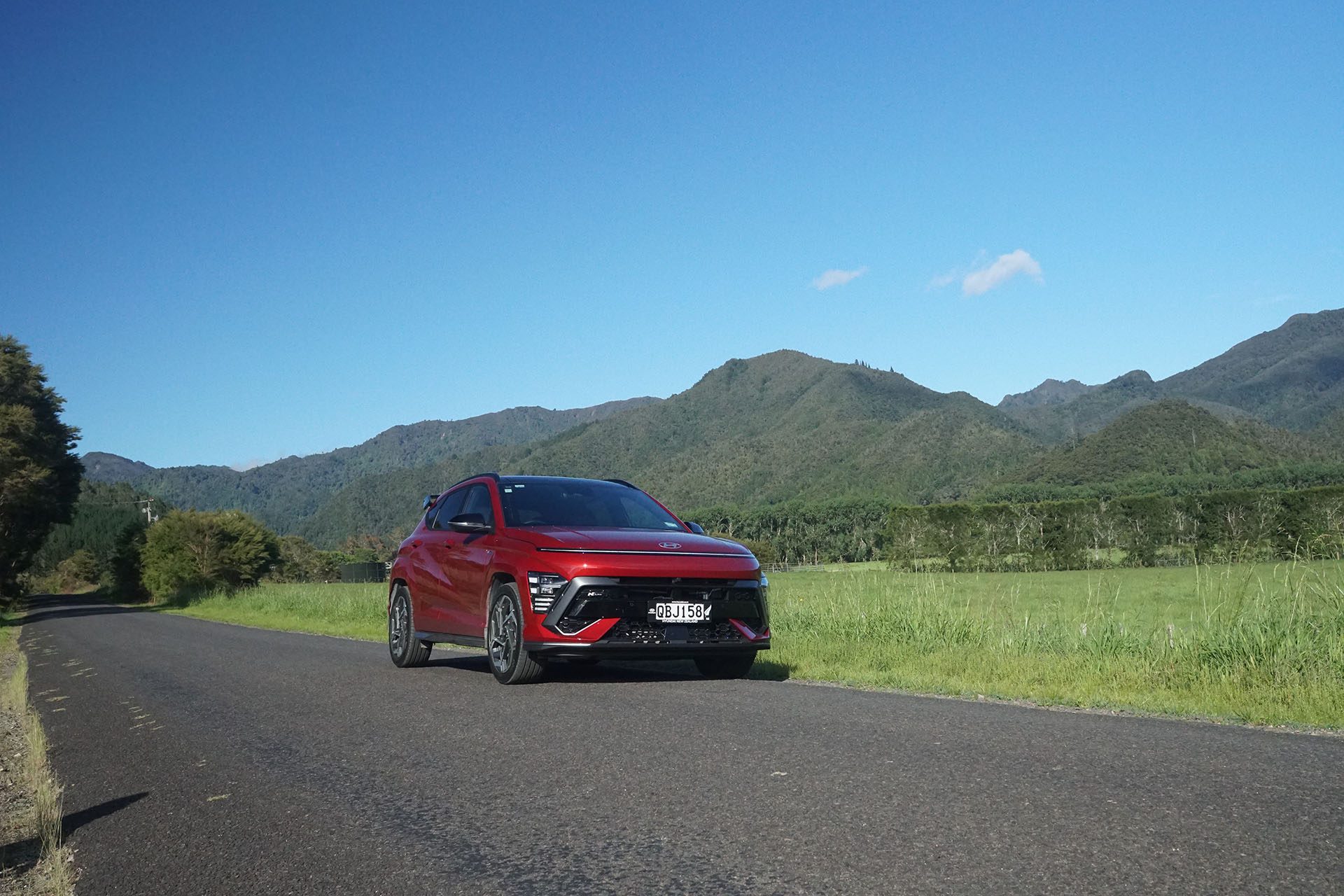
Kona has been a success story for Hyundai, accounting for one in four new vehicle sales here since 2017, and sometimes nearly one in three in New Zealand. Of the almost 12,000 sold, nearly 3000 were electric. It is amongst the most popular of the compact SUV segment too which now accounts for 30 per cent of the market.
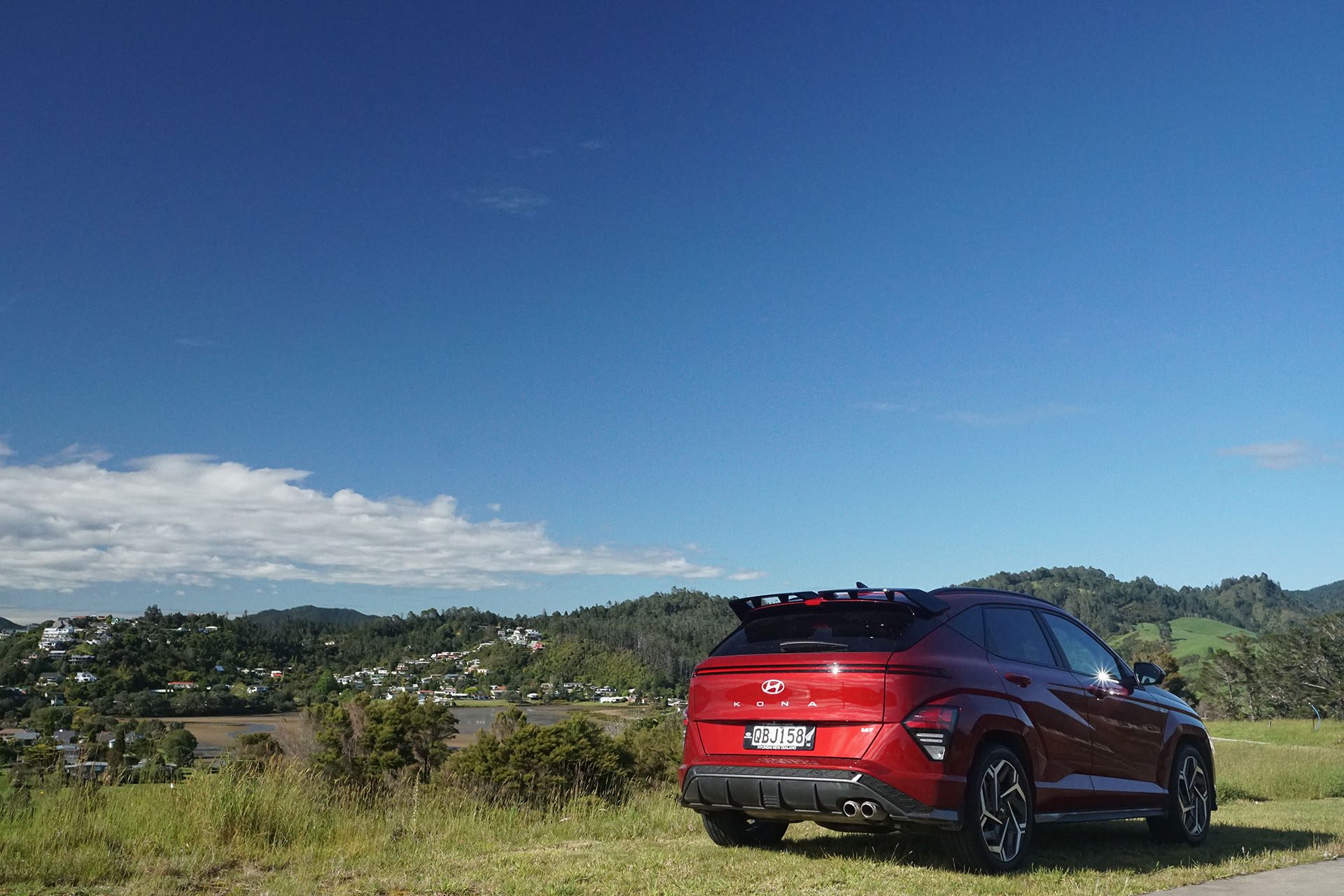
Being 2023, the newcomer is more expensive, as seems to be the norm these days. Prices for the line-up range from $42,990 for the Active 2.0 variant to $65,990 for the Limited N Line hybrid. There are four distinct hybrid versions available, differing by specification only, while there’s also a high-spec performance variant with a 1.6T and AWD powertrain, the Kona Limited N Line. It runs with an eight-speed auto and costs $64,990. In Gen 1, the prices ranged from $31,490 to $54,990, excluding the N model and the electric variants. Mention of, the 2nd-gen EV will arrive late in the first quarter of 2024. Don’t hold your breath for a new Kona N however.
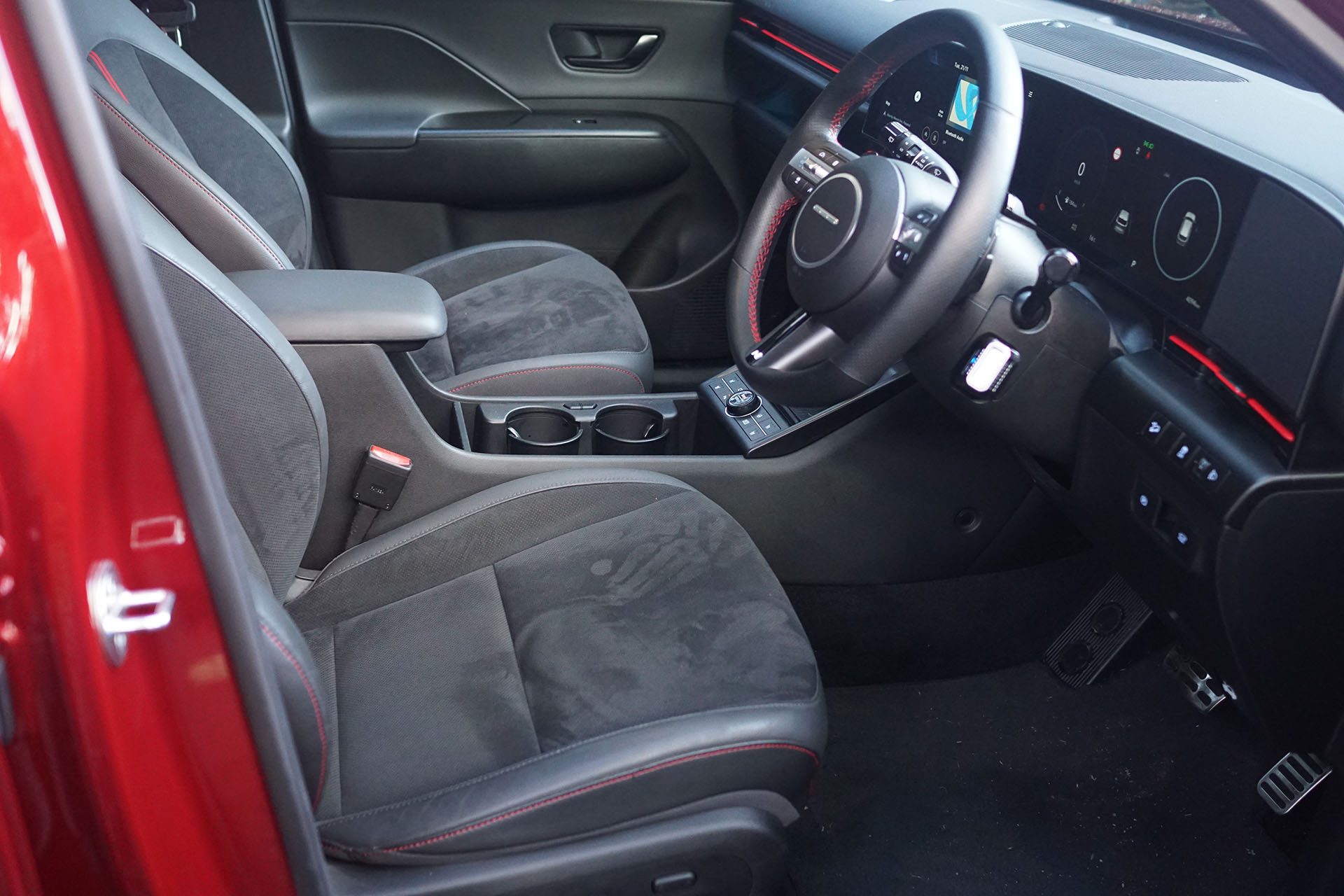
The latest Hyundai Kona features EV-inspired aero styling with active airflaps instead of a conventional grille, and a DRL that runs the full width of the bonnet. Despite an increase in size, the Cd figure falls from 0.32 to 0.30.
Second-gen Kona has stretched in all directions, up by 145mm to 4350mm in length (with a 60mm longer wheelbase), while width and height are also up slightly. This expansion translates into a more spacious and comfortable passenger area – rear seat occupants gain 77mm of extra legroom – and a boost in luggage capacity, out to 407L, up from 374L previously. When the rear seats are folded down, space increases by 85L to 1241L.
The cargo area also features a foldable dual-level floor-board, shopping bag hooks, a cargo net with tie-down hooks and a new storage location for the cargo shelf.
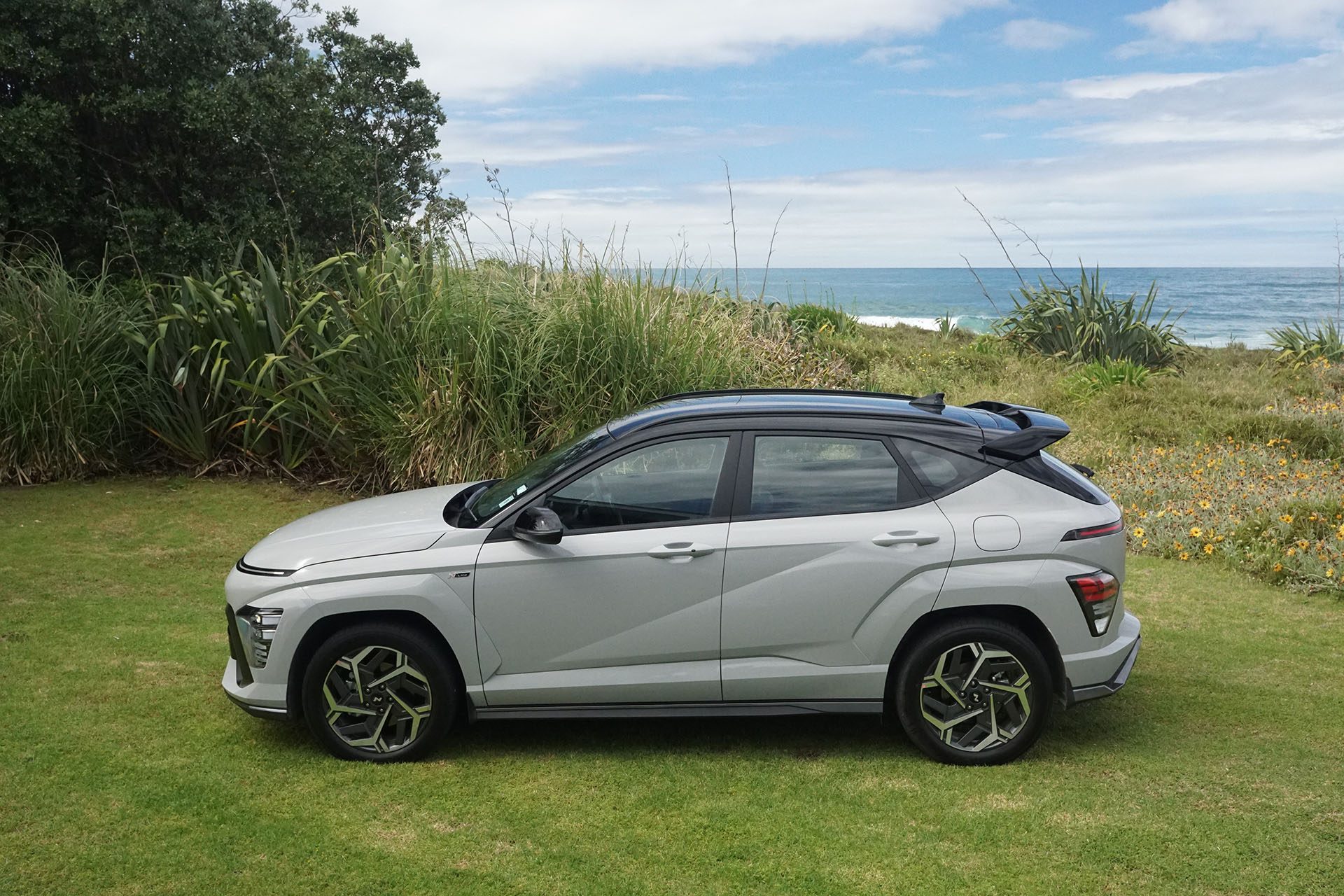
On the styling front, it features full-width lightbars (horizon lighting) front and rear, and headlights and taillights are separate, set below these. Under both bumpers are skidplates. There’s a chrome molding running from the beltline to the rear spoiler, and wheel arch cladding that integrates with the front and rear lighting. The Z style character lines in the doors, like in Tucson, are funky, and the headlights and taillights are visible in profile.
Step inside and you’re greeted by twin 12.3″ displays for instruments and multimedia functionality, all within the same panel and part of a ‘floating’ horizontal dashboard. Also new and freeing up centre console space is a shift-by-wire gear selector, on the right side of the steering column. While there’s rather too much in the way of hard plastics some are at least disguised to look soft.
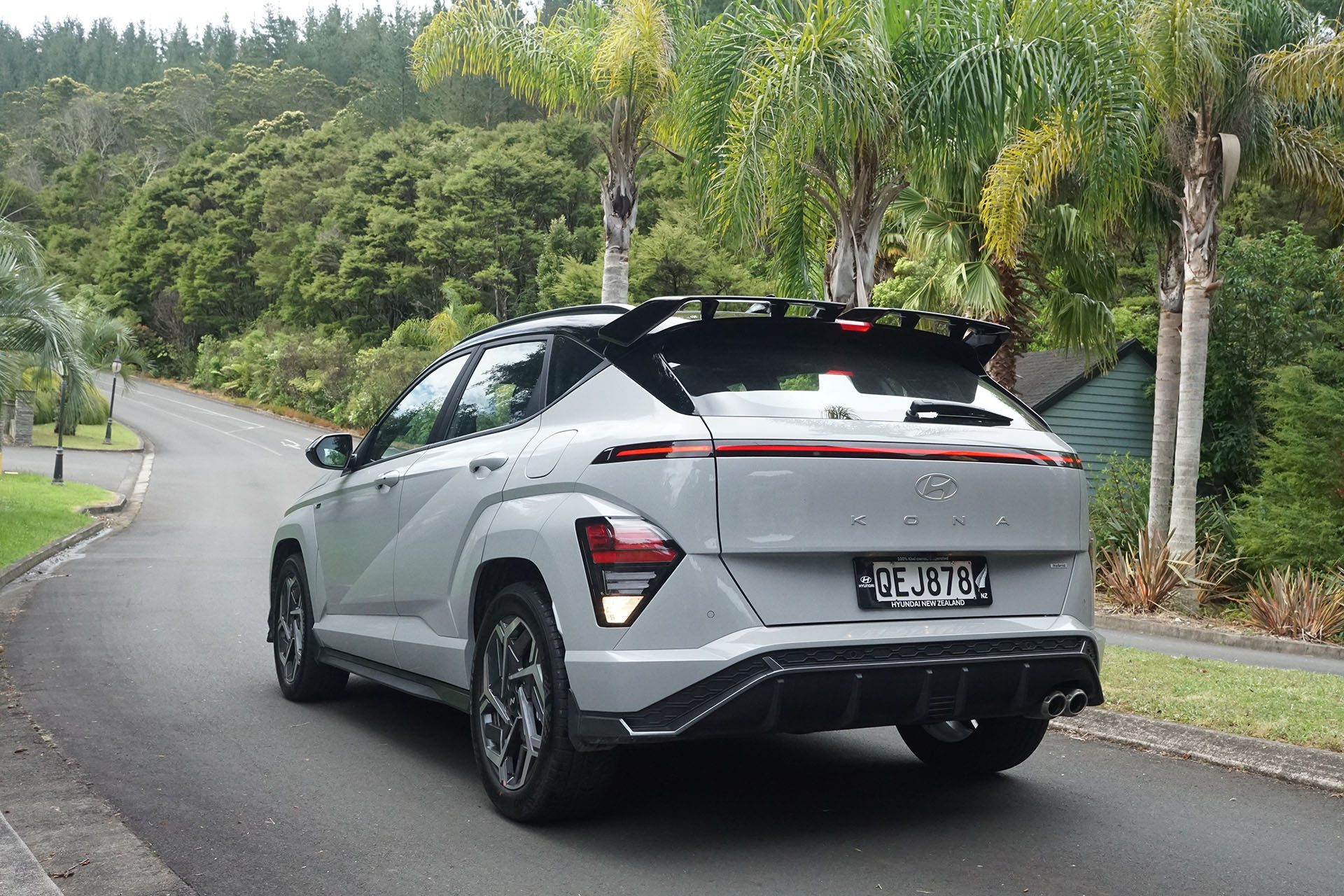
New Kona is available with three different powertrains, and there are a range of different spec levels. It’s somewhat confusing.
Kicking things off is a 110kW/180Nm 2.0L injected dual VVT Atkinson cycle petrol engine. It powers the front wheels through a CVT (7.3L/100km) and has a torsion beam rear end; the others feature multilink rear suspension. Spec levels are Active, N Line and Elite, costing $43k and $50k for the former two, while the Elite has no number yet.
The performance variant has a 146kW/265Nm 1.6L turbo and runs an eight-speed automatic firing all four wheels. It is rated at 8.5L/100km overall, and comes in lone Limited N Line specification for $64,990.
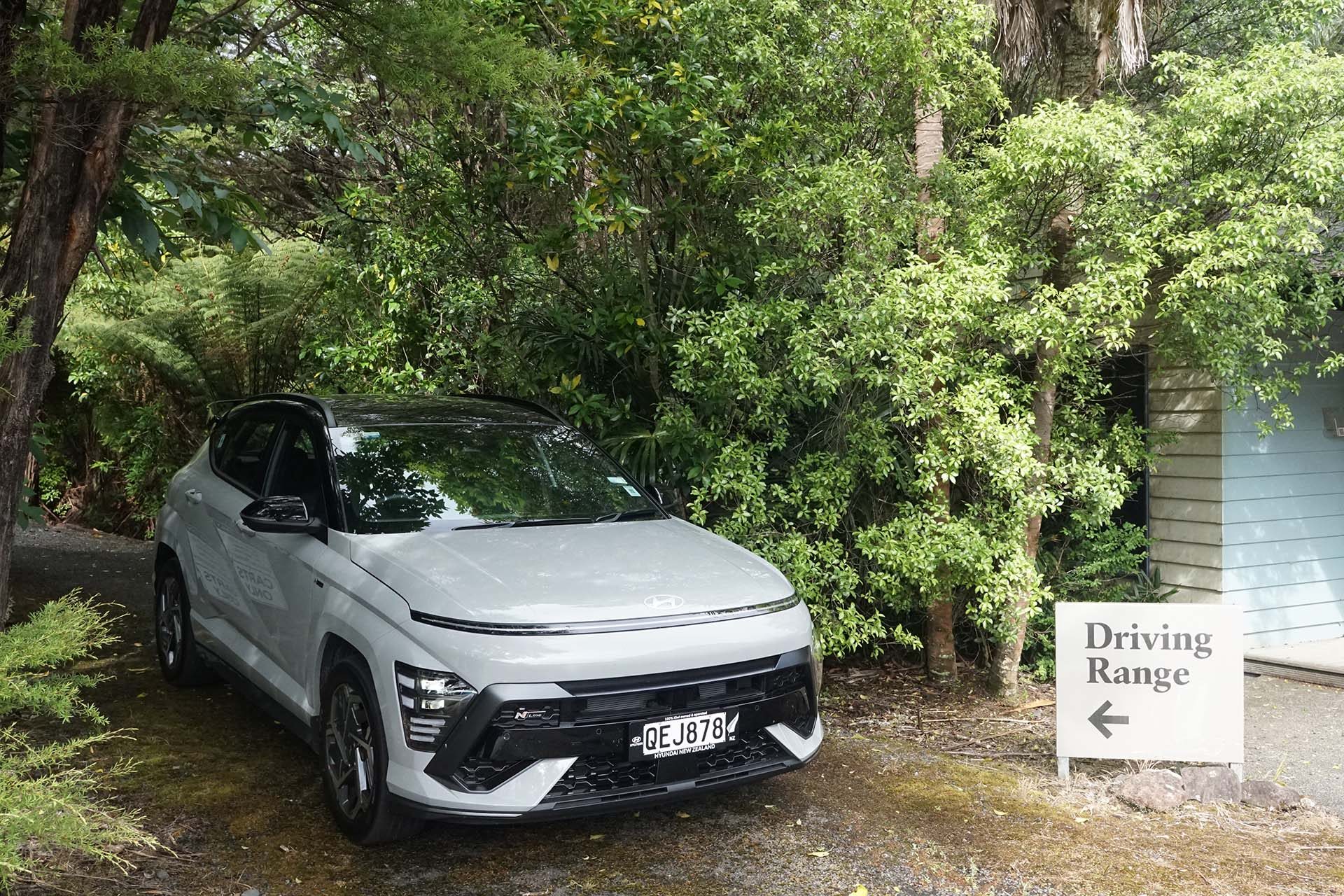
The hybrid is the third powertrain offering and comes in four guises (Active, Active N Line, Elite and Limited N Line). All run a 1.6L naturally aspirated IL4 driving the front wheels. The Atkinson-cycle petrol engine is aided by a 32kW/170Nm motor fed by a 1.3kWH battery offering system power of 104kW/265Nm. A six-speed twin-clutch transmission processes the power and overall fuel efficiency is a claimed 4.3L/100km. It features torque vectoring by brake for enhanced cornering prowess, and three-step variable brake regen using paddles. In Sport mode the paddles select gears instead. Other modes are Snow and Eco, whereas the two other powertrains feature Eco, Normal and Sport modes. The hybrid, which is our choice, starts at $52,990 and the N Line variant is $59,990. The Limited N Line costs $65,990 while the Elite variant is yet to be costed.
Options are limited to a glass sunroof for the two Kona Limited N Line variants, adding $2000 while all but the base Active Kona can have a two-tone paint option that includes a black roof and mirror caps for $790.
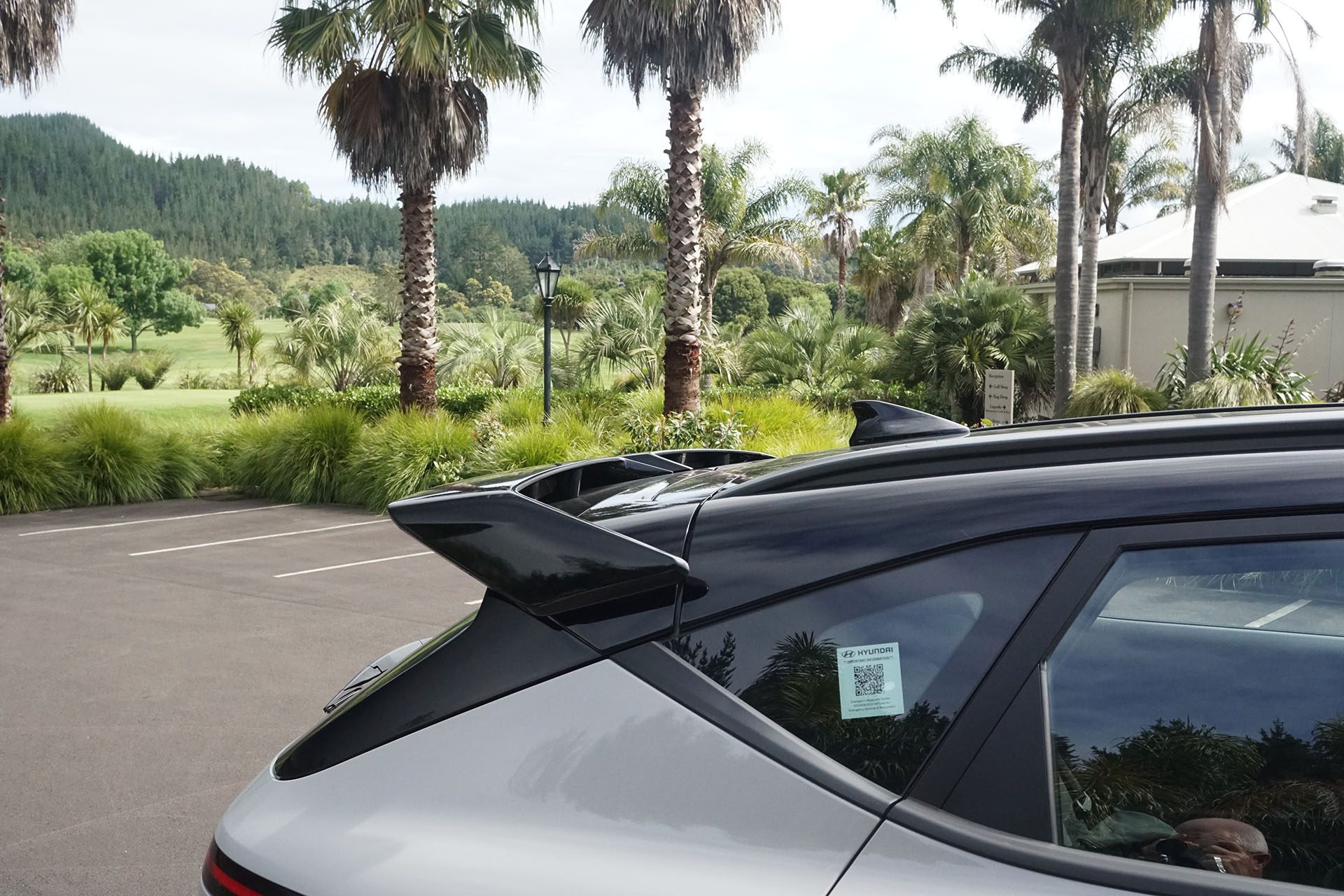
The N Line treatment is available across Active and Limited variants and all three powertrains, while the turbo AWD model is available exclusively with the N Line pack. It gives a more dynamic look inside and out. Key N Line exterior features include body-coloured cladding, N Line front bumper and side skirts, exclusive alloys, a wing-type spoiler, and N Line aluminium badging. Inside there’s an N Line steering wheel, leather/Alcantara seats with N emblem, and red highlights, amongst other things.
There are 10 colours across the range while Elite and N Line variants can be had with an optional two-tone finish comprising a contrasting black roof and mirror caps. All Konas come with alloy wheels, LED headlights and taillights, and dual-zone climate control. Higher grade variants get a BOSE eight speaker sound system and powered tailgate. Seats are manual in some, electric in others, with heater elements and ventilation in the top models. These also have a powered tailgate. The turbo has a heated wheel too. An open-type console design features a horizontal wireless charging pad and a pair of cup holders. A new graphic user interface makes the touchscreen easier to use and it’s faster in action.
SmartSense active safety items include AEB that can detect motorcycles, cyclists and pedestrians, Parking Collision Avoidance Assist-Reverse in top models, blind spot monitoring and a surround view camera system. A front centre-side airbag is one of seven. Other new features include junction turning function and forward attention warning, along with blind spot collision avoidance. There’s also safe exit warning, and parking assistance, while brakes are stronger than before.
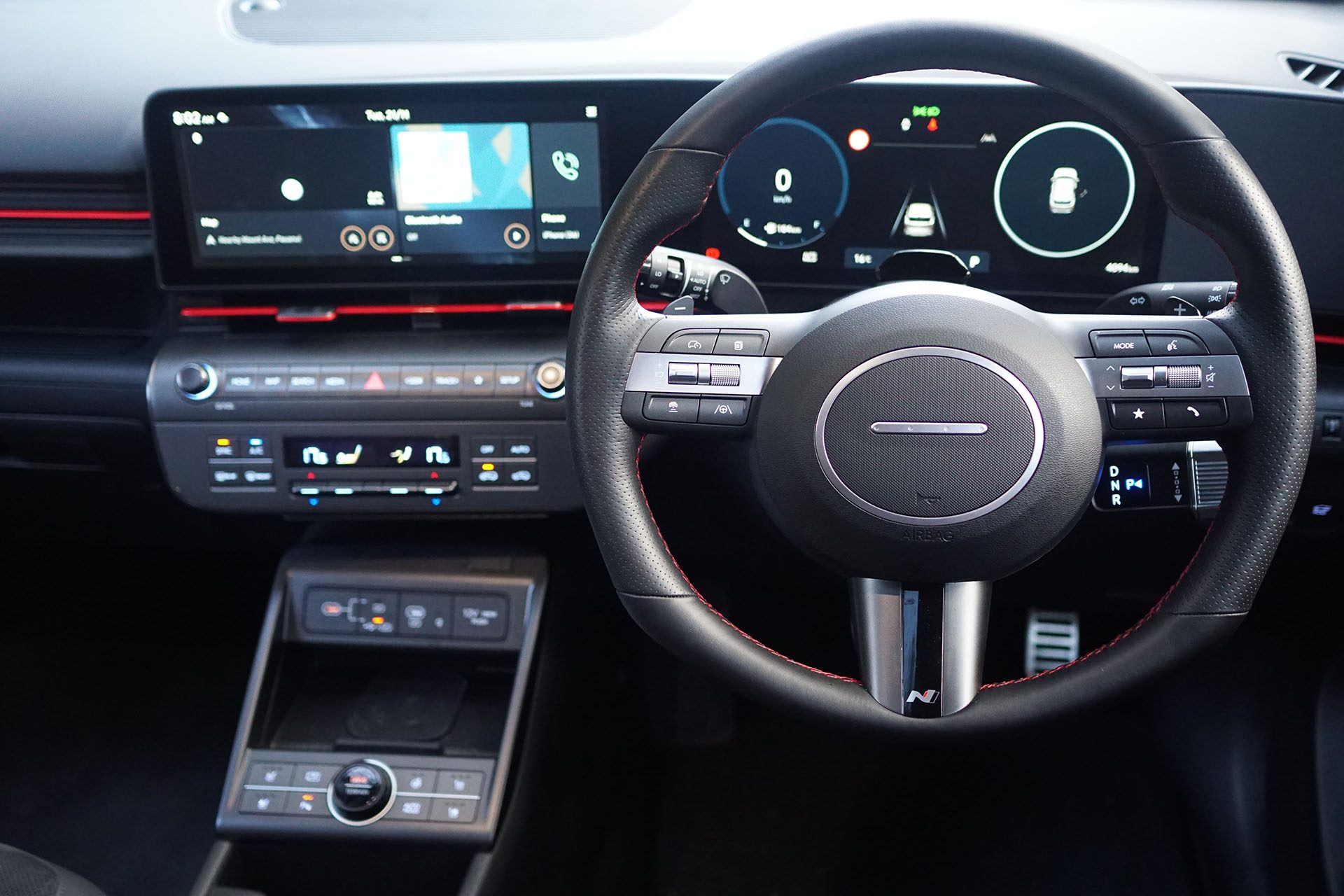
New Kona is built on the third-generation Hyundai ‘K-platform’ which aims to provide a tailored ride and handling mix. A 50 percent increase in the application of hot-stamped parts and body structure torsional rigidity increased by 10 percent contribute to improved safety, ride and handling and NVH.
Across the three models we drove there was one notably consistent feature and that is the vehicle’s quiet, refined ride. Amongst contributing factors are an acoustic windscreen, improved door seals, and redesigned rear suspension mounting bushes. The Kumho Ecsta rubber must also play a role. A range of accessories is on offer, such as a roof box, cargo liner and dressy bits.
The range is covered by a five-year/150,000km warranty programme.
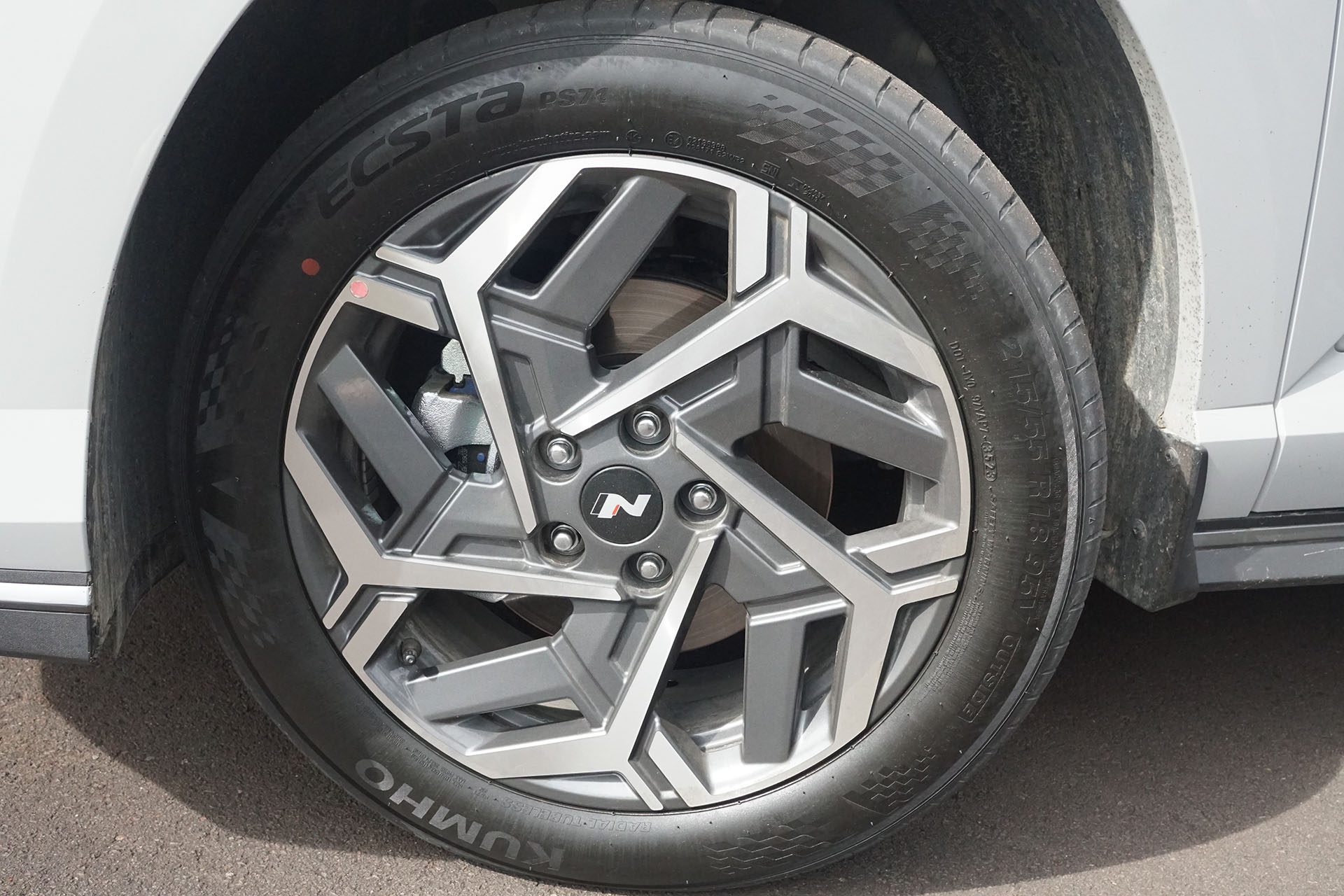
We essentially did the Coromandel loop, from the Waihi end up to Coromandel via Whitianga, and back out through Thames. With the Kopu-Hikuai Rd closed, the traffic was dire but it’s a scenic wonderland on a good day.
The 1.6T is the most talented, the quickest, the best equipped but we rather liked the 1.6 Hybrid, despite its odd drive modes. Eco works in town, but we often used Sport. Why there’s a Snow setting on a front driver is beyond us. In Sport though, the low-midrange shines in this, whereas the 2.0L seemed to require rowing along rather more to make the most of its midrange.
Our hybrid was an N Line variant with the flash seats, though manually adjusted apart from its powered lumbar support. The new look exterior is different, perhaps not quite so cute as the original but still novel. Once you get used to the new shift lever, it’s simple enough to drive with independent HVAC controls, volume and tune knobs for infotainment and easily cancelled lane keeping (pushbutton on the wheel). Traffic sign recognition bongs when you’re overspeed so we nixed that, as will you, easily enough done. Models with nav show the local speed limit on the map screen, without the bonging.
The quiet and supple ride are notable in this and indeed all variants, and with torque vectoring by brake and a multilink rear it corners nicely too. We liked the steering feedback in this, though the brake pedal isn’t quite so forthcoming. On the cruise this is easy on fuel, comfortably more so than the other two powertrains.
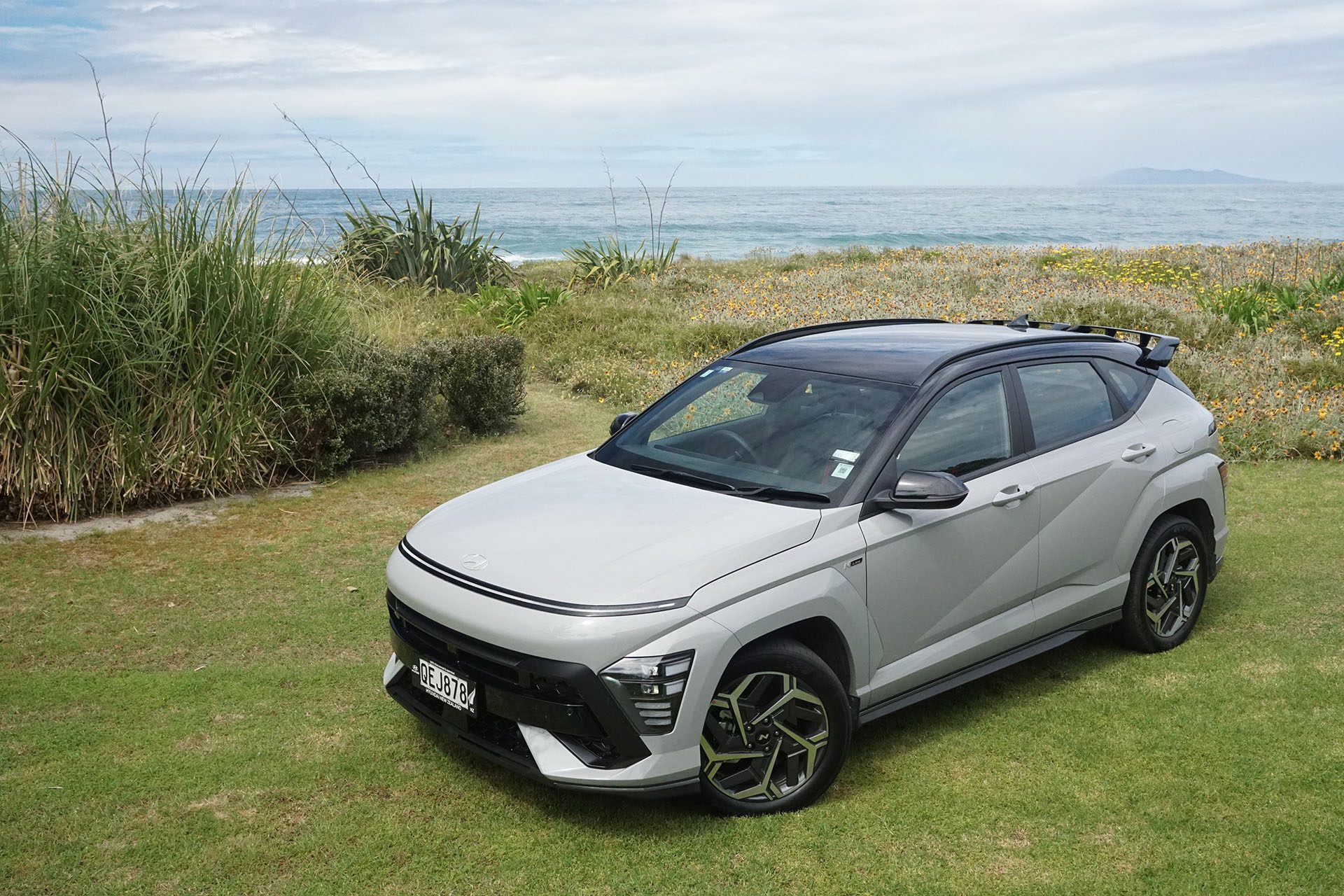
Next morning, on a blue sky day and we’re into the sportster of the range, the AWD 1.6T variant. This is the performer of the trio without question, though it was also the only model that needed to make a petrol stop at the halfway point on account of it registering 10L/100km when pushed. This is well specified, with powered seats and tailgate, nav, sports pedals, heated wheel, vented seats. Lots of spec. It’s the most secure too, as you’d expect with AWD and blitzed and blazed its way through the winding road between Tairua and Whitianga, yet it too is comfy and quiet. Second gear is a shade low for hill work, third a little high but it’s handy having eight gears and paddles.
We mainly opted for Sport here, just because the roads are so amazing. Pity the traffic wasn’t. Not for much longer hopefully, once the road across the top reopens next year.
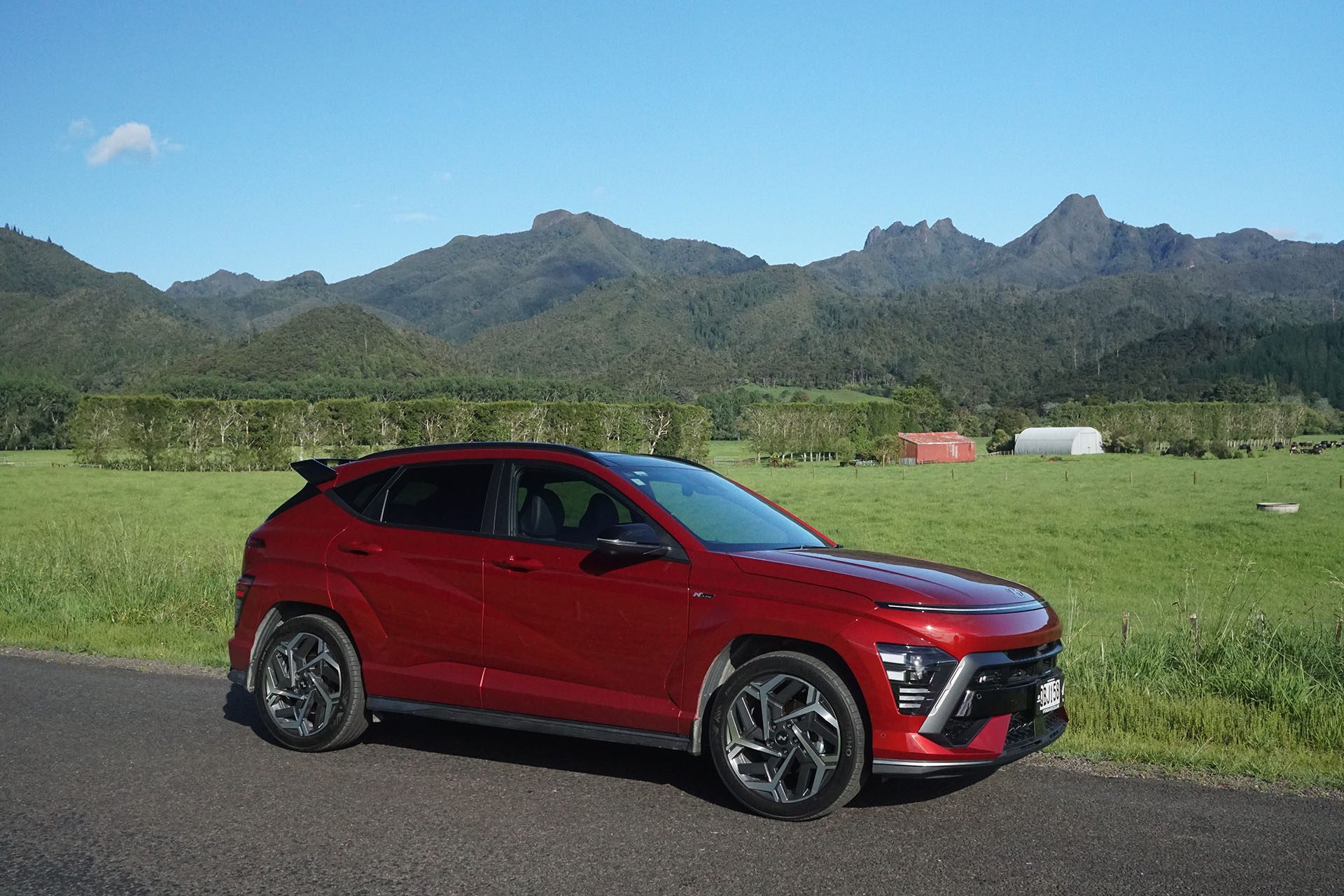
The 2.0L MPI variant in N Line guise we sampled last. It’s the most needy of the trio in terms of driver input, as you might expect with the least torque and it’s the shoutiest engine, being larger capacity. However, it is also the least expensive. The CVT tries to get the most from the Atkinson engine but it demands revs to deliver, and basement level grunt isn’t its forte, where the others get by much better. The CVT makes mock upshifts when pushed and fuel use in our hands was around 7.5 overall. This too has the lovely quiet ride of the range, and decent steering feedback over lumpy roads. All have a sweet driving position, slightly elevated for ease of entry and good visibility. There is no powered tailgate in this one but luggage space is fine, the floor height variable.
Being a good seller you can understand why Hyundai has run with lots of models for its second-gen Kona, the hybrid sensibly getting the most. We suspect some of the others will drop off over time, especially once the EV dots down.
Next year will be big for Hyundai, with the Ioniq 5N model arriving, along with the new Santa Fe and a large electric Ioniq SUV.
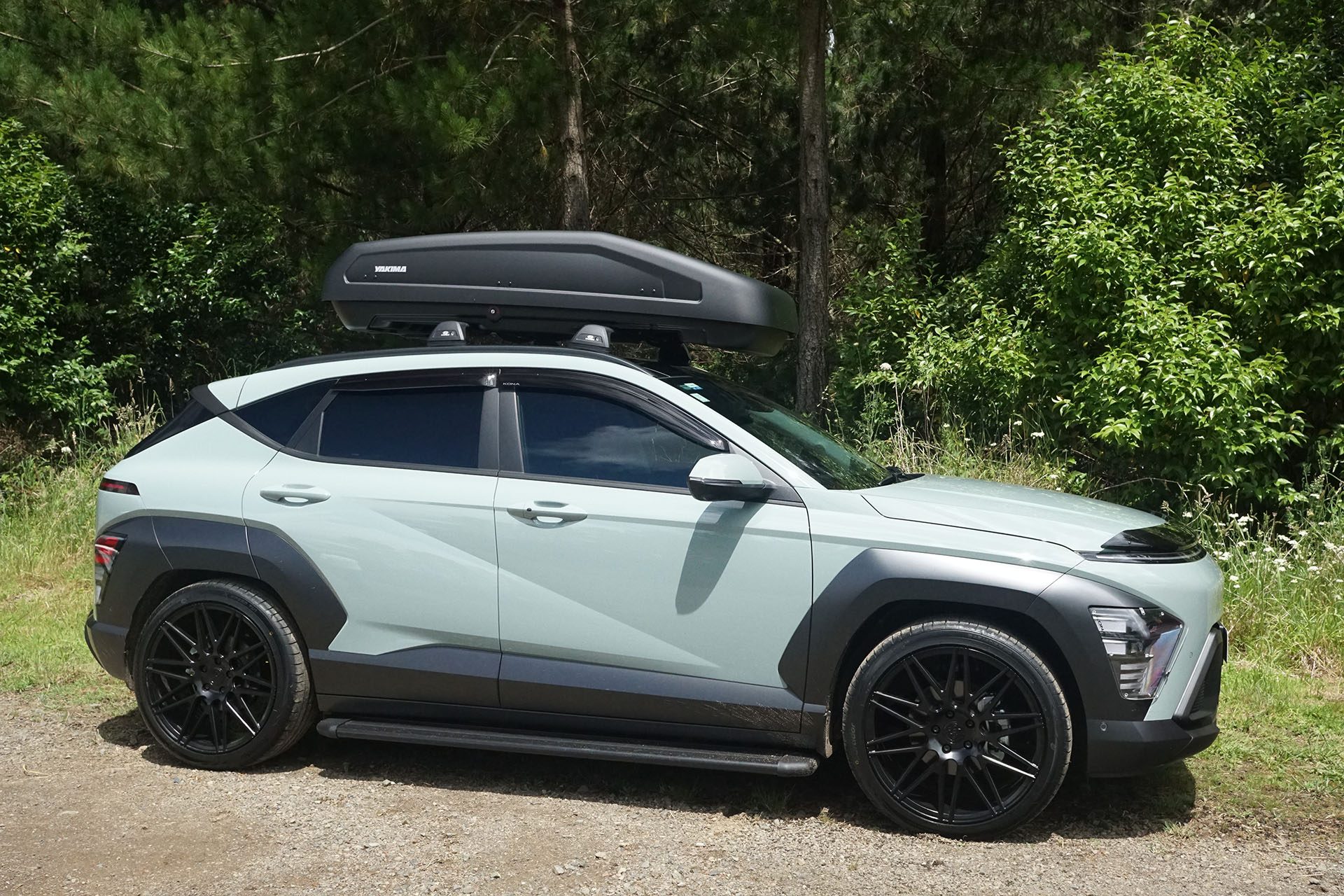
Hayden Paddon is a Kiwi and world rally legend, along with being a Hyundai ambassador for almost a decade. He is also the current title holder of the FIA European Rally Championship. Oh, and he won his seventh national rally title as well this year.
So when you suit up for a five-kay ride in his i20N rally car at the Maramarua Forest, you can be pretty sure you’re in safe hands. But that doesn’t stop you from being a quivering mess in the passenger seat for this is an automotive experience so far out of the norm that you may as well be a passenger in a spaceship.
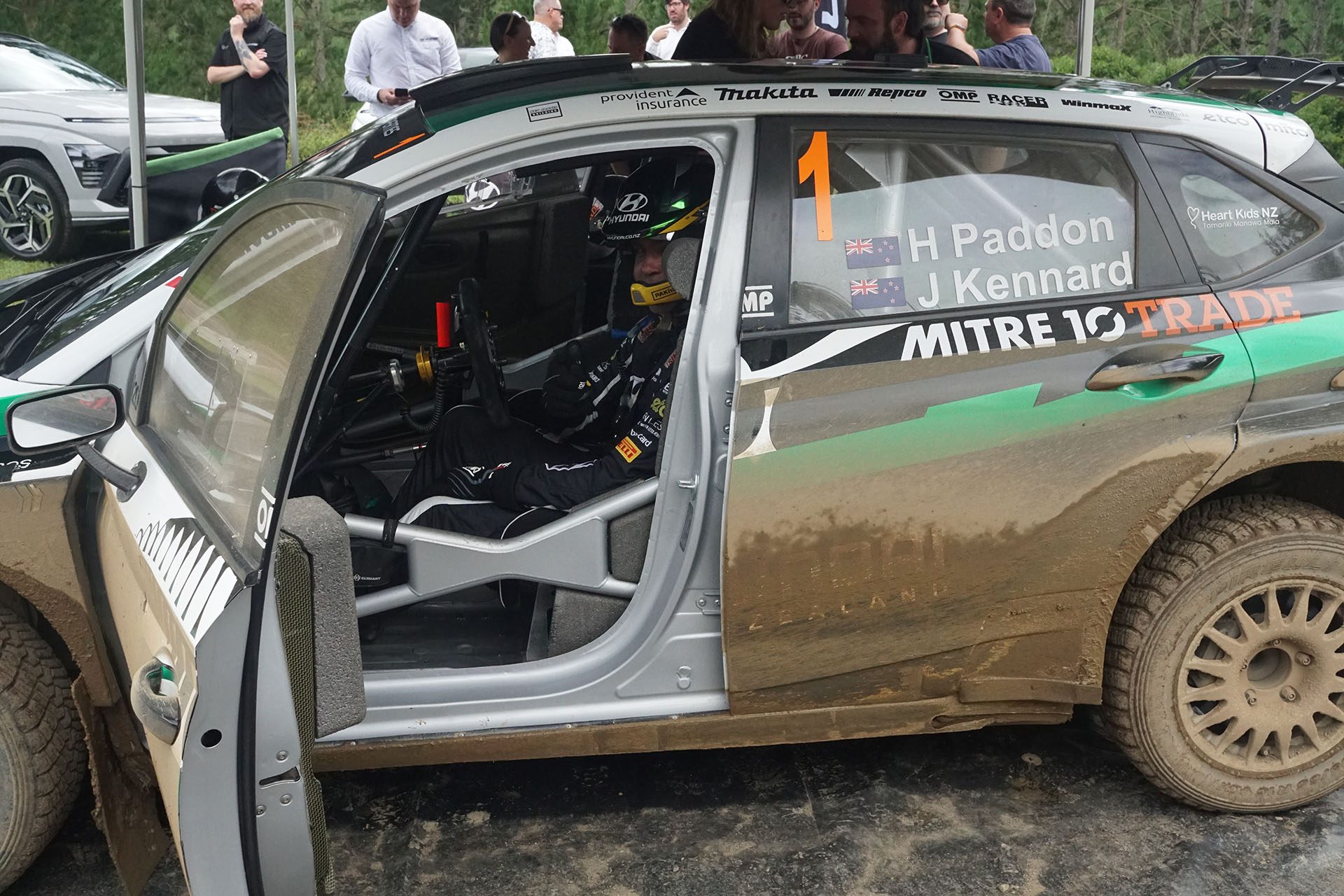
What stuns is just how quickly this makes it around the five-kay left-hand course, Paddon throwing it sideways seemingly way too far ahead of the approaching corner so it slows a little and lines up for the next straight bit. There’s also a jump in there about half way around. I reckon my pulse rate was probably off the scale. Hayden reckons he gets into a rhythm once underway and his heart rate averages around 130bpm during any given stage.
We volunteered to be first up and I was glad of that because the initial run was sure not to be his quickest, the conditions a touch damp from rain the day before, and he’d be busy sweeping the road clear for successive runs. Still, he did say he enjoyed scaring the uninitiated. Mission accomplished then.
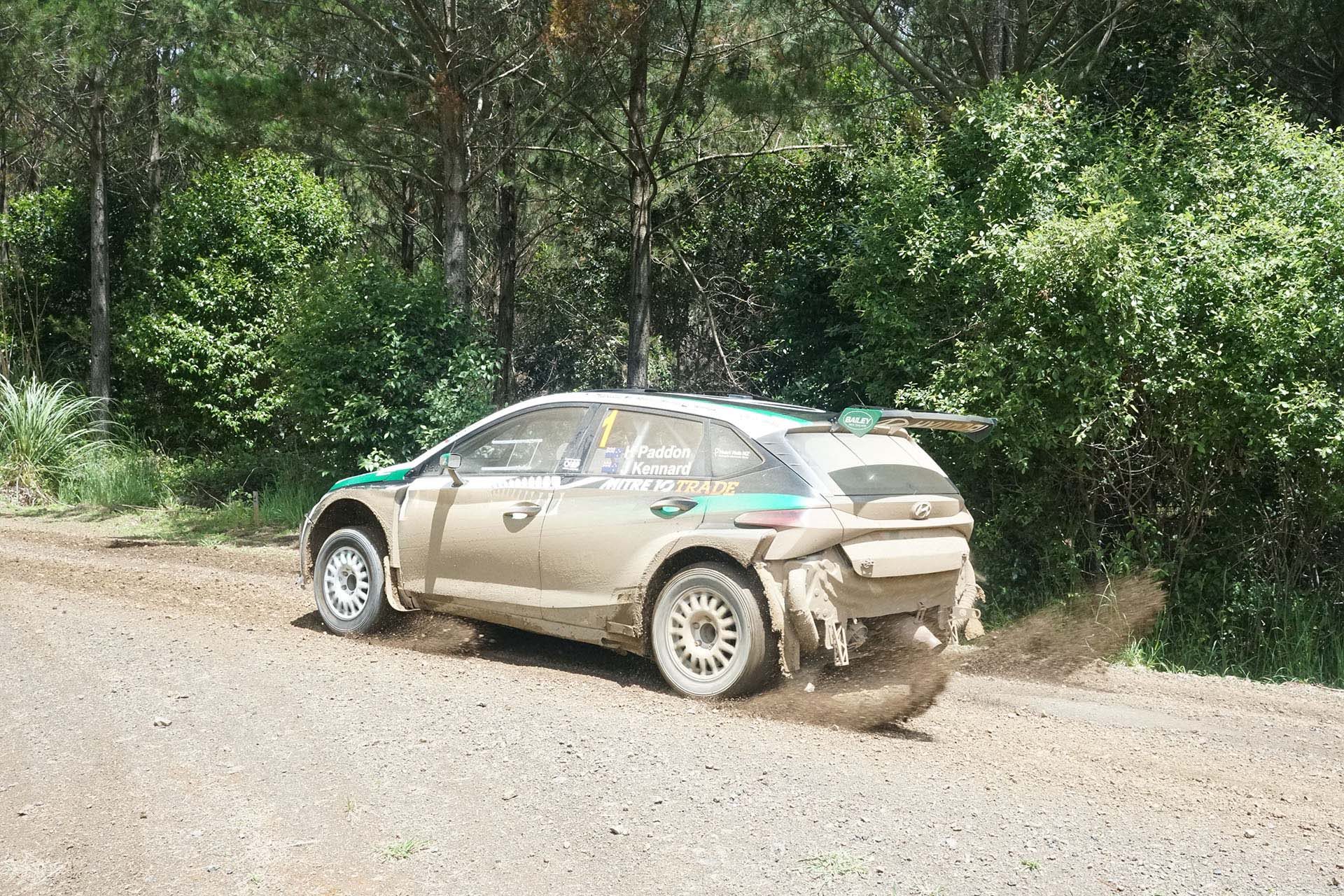
The noise is astounding, mainly of stones smashing against metalwork underneath, and the engine going gangbusters. But it’s the skill at work that is just so impressive, the hands and feet a blur. Many track experiences with experts are fun but they’re seldom that scary, perhaps because we’ve done them before but more likely because if things go wrong, you can be fairly sure it will turn out okay thanks to run-off areas, gravel traps etc. In the forest, not so much.
This was a once-in-a-lifetime experience, a moment to cherish so thanks for enlightening us Hayden and also to Hyundai for making it happen.
